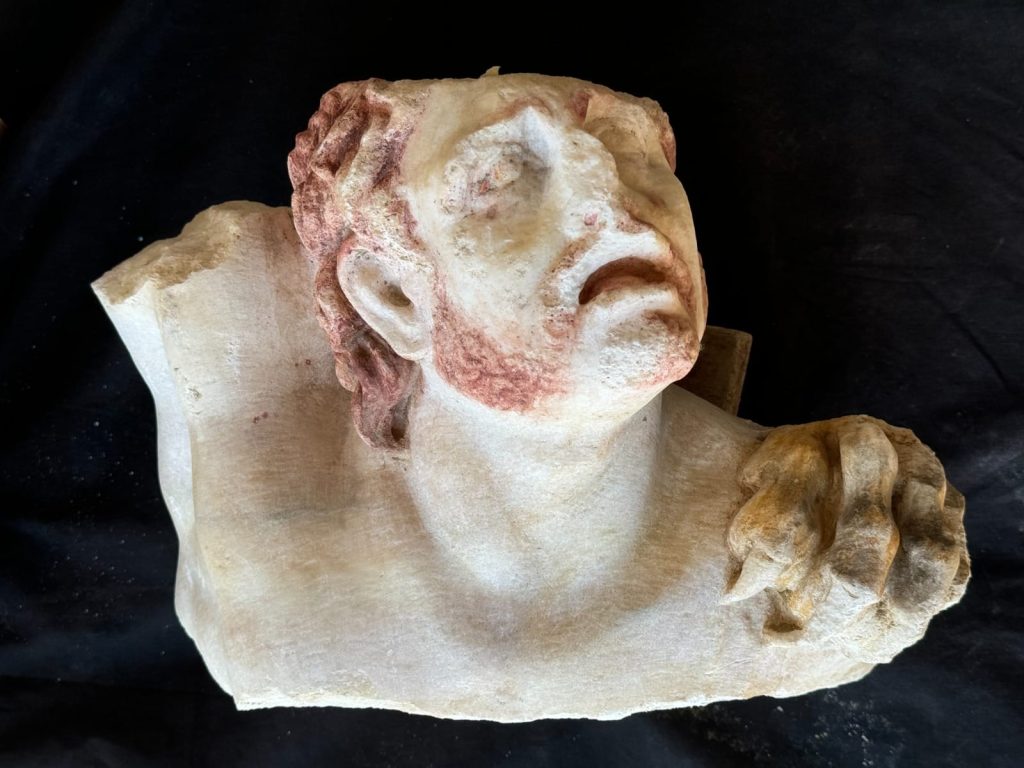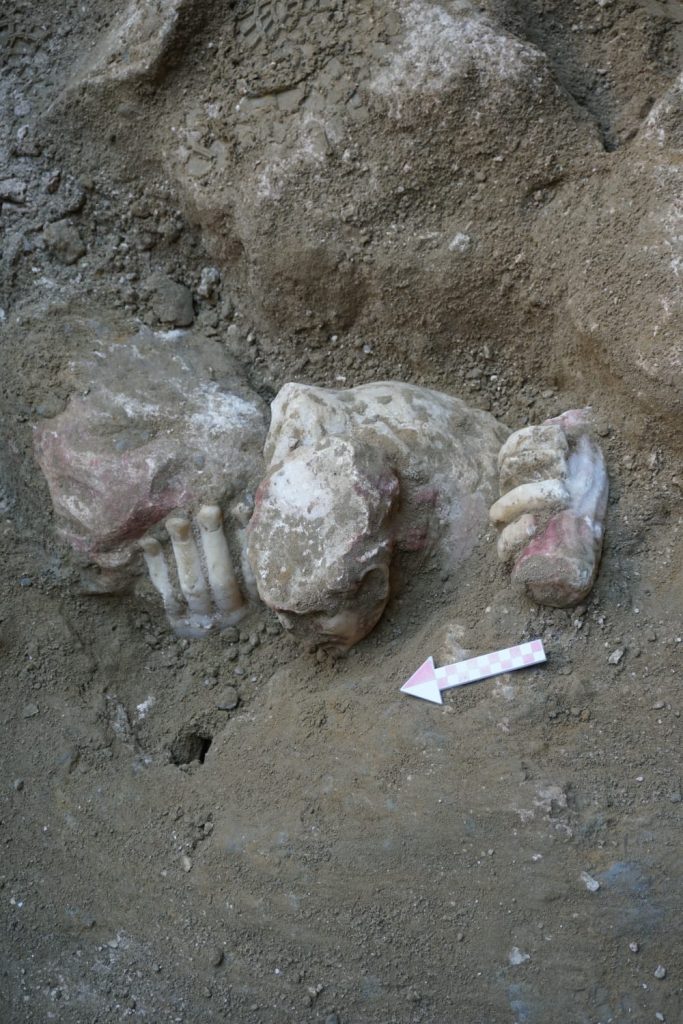
Unique colorful Skylla Group sculptures discovered in the ancient city of Laodikeia
Unique colorful Skylla Group sculptures were discovered in the ancient city of Laodikeia in Denizli province of Türkiye.
The ancient city, which dates back to the 3rd century BC, was founded south of the Lykos River.
Often referred to as “Laodikeia on the banks of the Lykos” in ancient sources, the city was founded by Antiochus II and named Laodikeia in honor of his wife.

Unique and colorful Skylla Group sculptures were discovered during the restoration work of the stage building of the city’s theater, which is ongoing within the scope of the “Heritage to the Future Laodicea Project” of the Ministry of Culture.
Culture and Tourism Minister Mehmet Nuri Ersoy announced the discovery of the Skylla Group statues on his social media account.

Minister Mehmet Nuri Ersoy said, “Unique and colorful Skylla Group sculptures were discovered during the restoration works of the stage building within the scope of the Heritage to the Future Laodicea Project. These extraordinary sculptures are very important as they are rare works that reflect the baroque style of the Hellenistic Period and have survived to the present day with their original paints.”
Excavation head Prof. Dr. Celal Şimşek gave the following information about the colorful Skylla group sculptures found during the restoration works on the theater stage.

“In these studies, it was determined that some of the statues belonging to the stage building were intact and some of them were broken and thrown into the fillings under the lodges due to the end of the pagan belief and the beginning of Christianity. The most important of these statues is the Skylla group. The head and hand of Skylla, which make up the Skylla Monster group, the body of Odysseus, the Achaean hero of the Trojan Wars, King of Ithaca, who was attacked and killed by wild dogs around Skylla’s groin, two body tops, one of which is the head of one of his friends, and the ship’s prow were recovered in the filling.”

Prof. Dr. Şimşek stated that the sculptures were made in baroque style in the early 2nd century BC by Rhodian sculptors Athanadoros, Hagesandros and Polydoros.
Noting that the only copy of the sculpture group belonging to the early Roman period in the archaeological world was discovered in 1957 in front of a cave in Sperlonga in western Italy, where the villa of Emperor Tiberius was located, Şimşek said the following:

“However, this group that we have identified in the Western Theater of Laodikeia, especially the late Hellenistic early empire, that is, the early Augustus Period, dates to 27 BC to 14 AD and is the earliest Hellenistic period original group that has been identified in the archaeological world so far. It is very important as it is the earliest group of artifacts found in the archaeological world to date and made according to the original. The fact that we uncovered these pieces with their colors really made us very happy. In this respect, these artifacts reveal a very important situation in the world of archaeology in terms of being the earliest artifacts in the world of archaeology and the artifacts that we have found with archaeological data that concretely illustrate an important legend described in Homeric epics and Odyssey epics.”

Prof. Dr. Şimşek emphasized that the baroque artwork on the head of Skylla is unique with its original paints whose quality can remain, and stated that the paints and the fingers of the hand are perfect in the ship’s oar that Skylla holds in her hand.
Stating that the expression of pain on the face of the figure attacked by the wild Skylla dog is very realistic and high quality, Şimşek said, “In addition, the paints of the figure have been preserved very well and have survived to the present day. On the other hand, the attack and bite of the wild dog is very realistic. Probably the sculpture group was exhibited on the second floor of the theater and in this respect, the paints were preserved.”
You may also like
- A 1700-year-old statue of Pan unearthed during the excavations at Polyeuktos in İstanbul
- The granary was found in the ancient city of Sebaste, founded by the first Roman emperor Augustus
- Donalar Kale Kapı Rock Tomb or Donalar Rock Tomb
- Theater emerges as works continue in ancient city of Perinthos
- Urartian King Argishti’s bronze shield revealed the name of an unknown country
- The religious center of Lycia, the ancient city of Letoon
- Who were the Luwians?
- A new study brings a fresh perspective on the Anatolian origin of the Indo-European languages
- Perhaps the oldest thermal treatment center in the world, which has been in continuous use for 2000 years -Basilica Therma Roman Bath or King’s Daughter-
- The largest synagogue of the ancient world, located in the ancient city of Sardis, is being restored











Leave a Reply